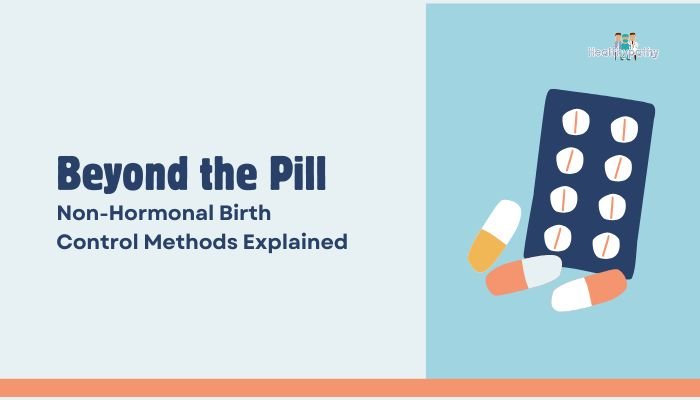Introduction
Hormones play a critical role in regulating our metabolism, growth, reproductive health, and even mood. However, modern life exposes us to a range of synthetic chemicals that may interfere with these natural processes. These substances, known as endocrine disruptors, can mimic or block the body’s hormones, sometimes leading to significant health consequences over time.
From plastic containers to personal care products, endocrine disruptors often lurk in places we least suspect.
This article dives into what endocrine disruptors are, how they function, the possible health risks, and steps you can take to reduce exposure. By understanding these chemicals and their sources, you can make more informed choices for yourself and your family.
Understanding Endocrine Disruptors
The Endocrine System
The endocrine system consists of glands (like the thyroid, adrenal glands, and ovaries/testes) that secrete hormones. These hormones circulate through the bloodstream to regulate many bodily functions, from stress response and reproductive cycles to energy and growth.
How Endocrine Disruptors Work
Endocrine disruptors are substances that can:
- Imitate Natural Hormones: Binding to hormone receptors, triggering abnormal signaling.
- Block Hormone Receptors: Preventing real hormones from attaching and doing their job.
- Alter Hormone Production or Breakdown: Leading to too much or too little of certain hormones circulating in the body.
Tiny exposures might seem inconsequential, but everyday contact over months and years can accumulate, raising concerns about chronic effects, especially during vulnerable life stages such as pregnancy and puberty.
Common Endocrine-Disrupting Chemicals (EDCs)
Bisphenol A (BPA) and Bisphenol Substitutes
- Where Found: Polycarbonate plastics (food containers, water bottles), epoxy linings of cans, thermal paper receipts.
- Concerns: Mimics estrogen; linked to issues like altered reproductive development, metabolic disorders.
- Note: BPA-free products may contain similar bisphenols (BPS, BPF) with comparable hormone-mimicking properties.
Phthalates
- Where Found: Plasticizers in vinyl plastics, personal care products (fragrances, lotions), and food packaging.
- Concerns: Can disrupt testosterone and thyroid hormones, potentially impacting reproductive development and metabolism.
Parabens
- Where Found: Preservatives in cosmetics, skincare, and some processed foods.
- Concerns: Weak estrogenic effects in high concentrations, raising worries about breast cancer risk and hormonal imbalances.
Per- and Polyfluoroalkyl Substances (PFAS)
- Where Found: Nonstick cookware, stain-resistant fabrics, food packaging (e.g., grease-proof paper).
- Concerns: Potential disruptors linked to thyroid issues, immune dysfunction, and metabolic changes. Many are persistent in the environment and bioaccumulate in wildlife and humans.
Flame Retardants (PBDEs)
- Where Found: Furniture foam, electronics, mattresses.
- Concerns: Possible interference with thyroid function and neurodevelopment in children.
Pesticides (e.g., Atrazine, Organophosphates)
- Where Found: Agricultural fields, residues on produce.
- Concerns: Some interfere with reproductive hormones, potentially impacting fertility or fetal development.
Potential Health Effects
Reproductive and Developmental Issues
- Fertility Problems: EDCs may lower sperm quality or disrupt ovulation, complicating conception.
- Birth Defects: Abnormal hormone signaling during pregnancy can affect fetal organ development.
- Early Puberty: Certain exposures are tied to earlier onset of puberty in girls.
Metabolic Syndrome and Obesity
Exposure to certain “obesogenic” chemicals can affect how the body stores fat or regulates appetite, contributing to weight gain and insulin resistance. Bisphenols, phthalates, and organotins are suspected players.
Hormone-Related Cancers
While direct causation is complex, studies show potential links between EDC exposure and hormone-sensitive tumors (e.g., breast, prostate). Disruptors that mimic estrogen may pose particular concern.
Thyroid Function
Because the thyroid gland influences metabolic rate and neurological development, chemicals that block thyroid hormone receptors or alter hormone levels can lead to fatigue, mood swings, or growth delays in children.
Everyday Exposure Pathways
Food and Drink
- Plastic Containers & Wrappings: Microwaving or heating plastics can leach chemicals into food.
- Canned Foods: BPA-based epoxy linings can release into canned soups, vegetables, or beverages.
- Nonstick Pans: Scratched older pans with PFAS-based coatings may contaminate meals.
Personal Care and Household Products
- Cosmetics and Lotions: Parabens and phthalates used in fragrances or as preservatives.
- Cleaning Supplies: Some contain phthalates in scented formulas, or other lesser-known EDCs.
- Flame Retardants in Furniture: Dust from treated upholstery can be inhaled or ingested.
Environmental Exposure
- Tap Water: Certain pesticides or industrial chemicals can seep into water supplies if not adequately filtered.
- Outdoor Air and Soil: Agricultural pesticides can drift to residential areas; flame retardants break down into dust.
Reducing Your Exposure
Food and Kitchen Precautions
- Use Glass, Stainless Steel, or Ceramic: Heat food in these rather than plastic.
- Limit Canned Foods: Opt for fresh, frozen, or glass-packed items. Look for “BPA-free” cans but remain aware of possible bisphenol substitutes.
- Check Water Filter: Consider home filtration to remove contaminants like chlorine byproducts, PFAS, or pesticide residues.
Smart Personal Care Choices
- Read Labels: Seek “paraben-free,” “phthalate-free,” or “fragrance-free” personal care products.
- Minimal Ingredient Lists: Simpler formulas often have fewer synthetic chemicals.
- Avoid Spray Perfumes: Aerosols can linger in air; try less intrusive forms or natural essential oils if suitable.
Household Strategies
- Dust and Vacuum Regularly: Using a vacuum with a HEPA filter can reduce dust-bound flame retardants and other toxins.
- Ventilate: Open windows to lower indoor chemical buildup.
- Choose Safer Furnishings: Opt for naturally sourced or “PBDE-free” upholstered items, read certifications like OEKO-TEX for textiles.
Checking for “Greenwashing”
Many products claim to be “all-natural” or “non-toxic” without regulation of these terms. Third-party certifications (e.g., EWG Verified, USDA Organic for certain personal care items) can offer more confidence in ingredient standards.
Regulatory Landscape and Ongoing Debates
Gradual Policy Changes
Different regions approach EDC regulation variably. The European Union has stricter controls on some chemicals (like certain phthalates or parabens) than the US. Ongoing debates revolve around:
- Safe Exposure Limits: Setting thresholds for daily intake, but cumulative or combined exposures remain complex.
- Testing Requirements for New Chemicals: Many suspect chemicals remain on the market with limited human safety data.
- Product Labeling Laws: Some advocate for clearer labeling so consumers can identify products free from major EDCs.
Industry Pushback vs. Consumer Demand
Some manufacturers voluntarily reduce known EDCs in response to consumer calls for safer products. Non-BPA plastic lines, phthalate-free cosmetics, and pesticide-free produce reflect consumer-driven change. Simultaneously, critics argue for systematic regulatory reforms to cover chemical classes rather than one chemical at a time.
Special Considerations: Children and Pregnancy
Vulnerable Windows
- Prenatal Exposure: Disrupting hormonal signals during fetal development can alter organ systems, sometimes with lifelong impacts.
- Infants and Young Children: Immature detoxification systems make them more susceptible to toxicity. Early endocrine disruption can lead to growth or developmental problems.
Tips for Pregnant Women and Families
- Avoid High-Exposure Scenarios: Heating plastics, strong chemical odors.
- Organic Produce for Dirty Dozen Items: Minimizes pesticide intake.
- Skip Unnecessary Cosmetic or Cleaning Products: Choose simpler, “clean” labeled alternatives.
Conclusion
Endocrine disruptors infiltrate our daily lives through plastics, personal care items, household dust, and more. While avoiding them entirely may be unrealistic, informed choices can meaningfully reduce exposure. From using safer kitchenware to reading product labels and practicing thorough dust management, small steps accumulate toward healthier hormone function and long-term wellness.
As science evolves, better testing, labeling, and regulatory policies may help consumers navigate the chemical landscape with greater ease. Meanwhile, personal vigilance remains crucial. By understanding the nature of endocrine disruptors, learning to recognize sources, and adopting safer habits, individuals can help safeguard themselves and future generations from these hidden hormone-disrupting threats.
References
- Gore AC, Chappell VA, Fenton SE, et al. EDC-2: The Endocrine Society’s Second Scientific Statement on Endocrine-Disrupting Chemicals. Endocr Rev. 2015;36(6):E1–E150.
- World Health Organization (WHO). State of the Science of Endocrine Disrupting Chemicals. 2013.
- Trasande L, Zoeller RT, Hass U, et al. Estimating burden and disease costs of exposure to endocrine-disrupting chemicals in the European union. J Clin Endocrinol Metab. 2015;100(4):1245–1255.
- Consumer Reports. How to choose safer personal care products. (Accessed June 2025).
- Environmental Working Group (EWG). EWG’s Guide to Healthy Cleaning. (Accessed June 2025).
- La Merrill MA, Vandenberg LN, Smith MT, et al. Consensus on the key characteristics of endocrine-disrupting chemicals as a guide for hazard identification. Nat Rev Endocrinol. 2020;16(1):45–57.
- US Food and Drug Administration (FDA). Bisphenol A (BPA): Use in food contact application. (Accessed May 2025).
- Peper M, Harvey J, Carmichael L. Using less plastic and safer materials in daily life. J Environ Health. 2023;52(1):22–27.
- Gore AC, et al. EDC impacts on child development. Pediatrics. 2022;149(6):e2021050079.
- Vandenberg LN, Blumberg B, Antoniou MN, et al. Is it time to reassess current safety standards for low-dose chemical exposures? J Am Med Assoc. 2024;18(3):75–82.





